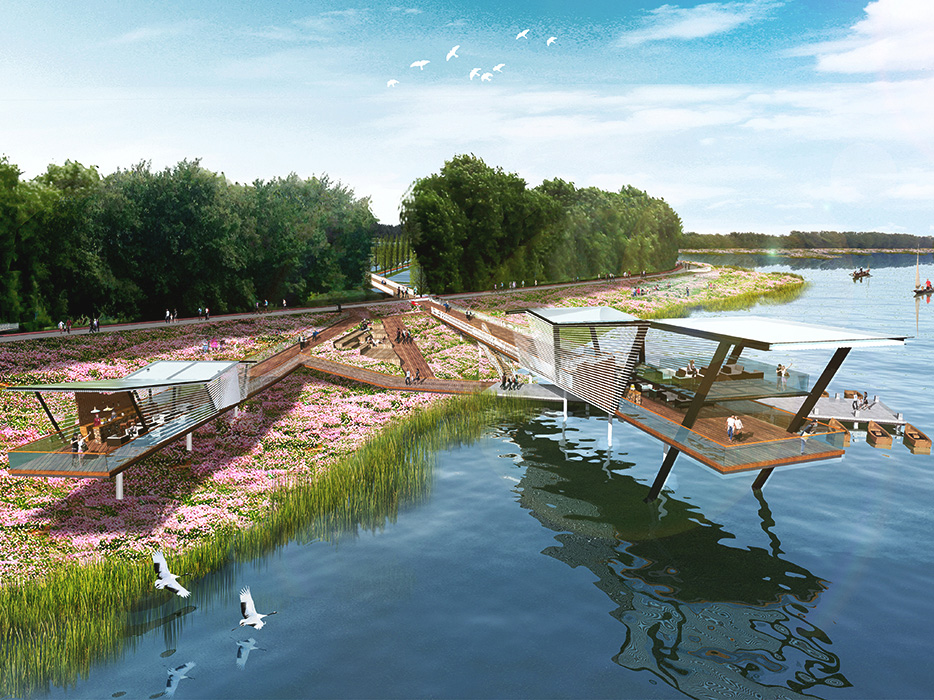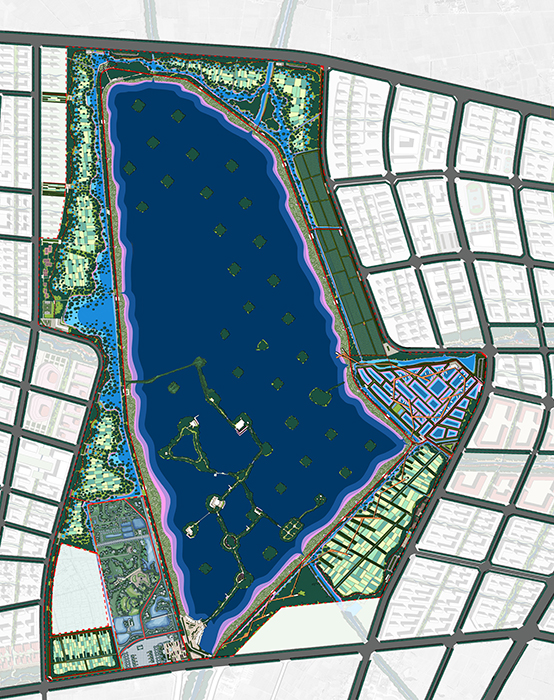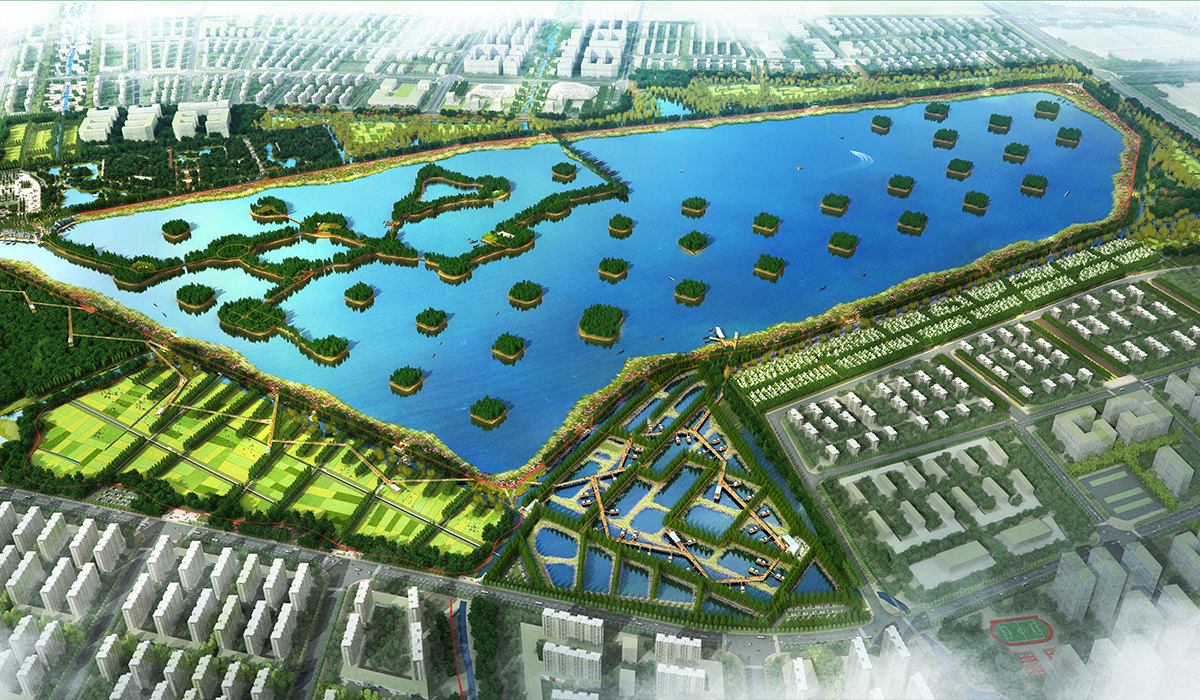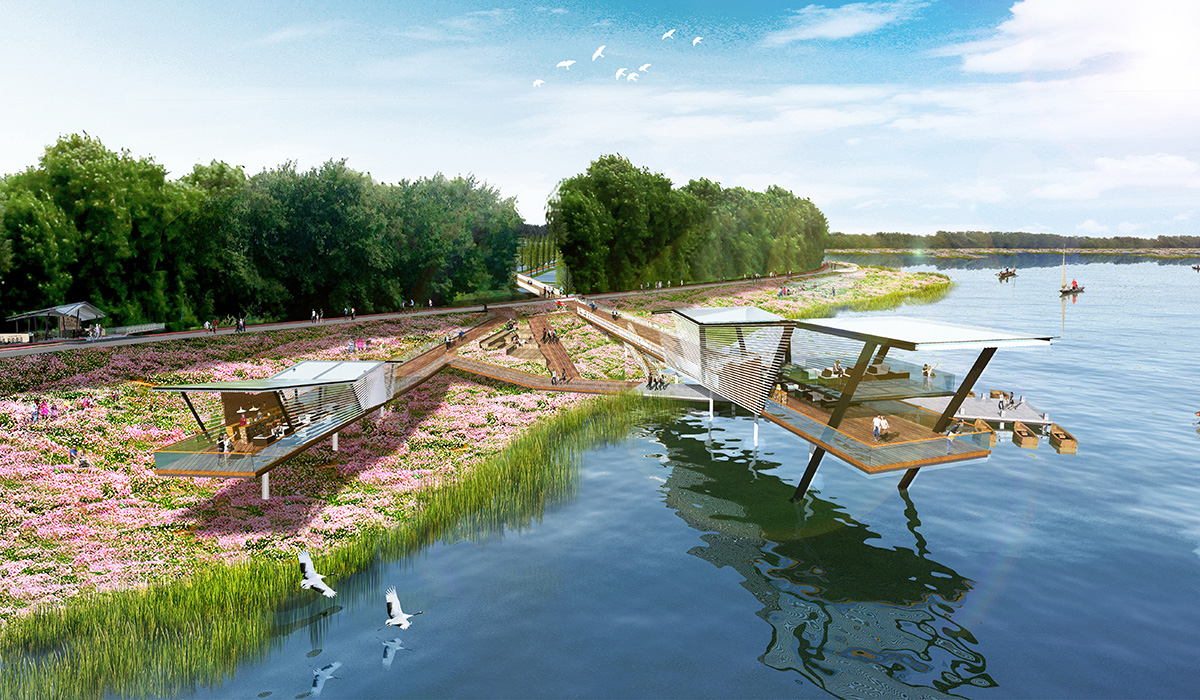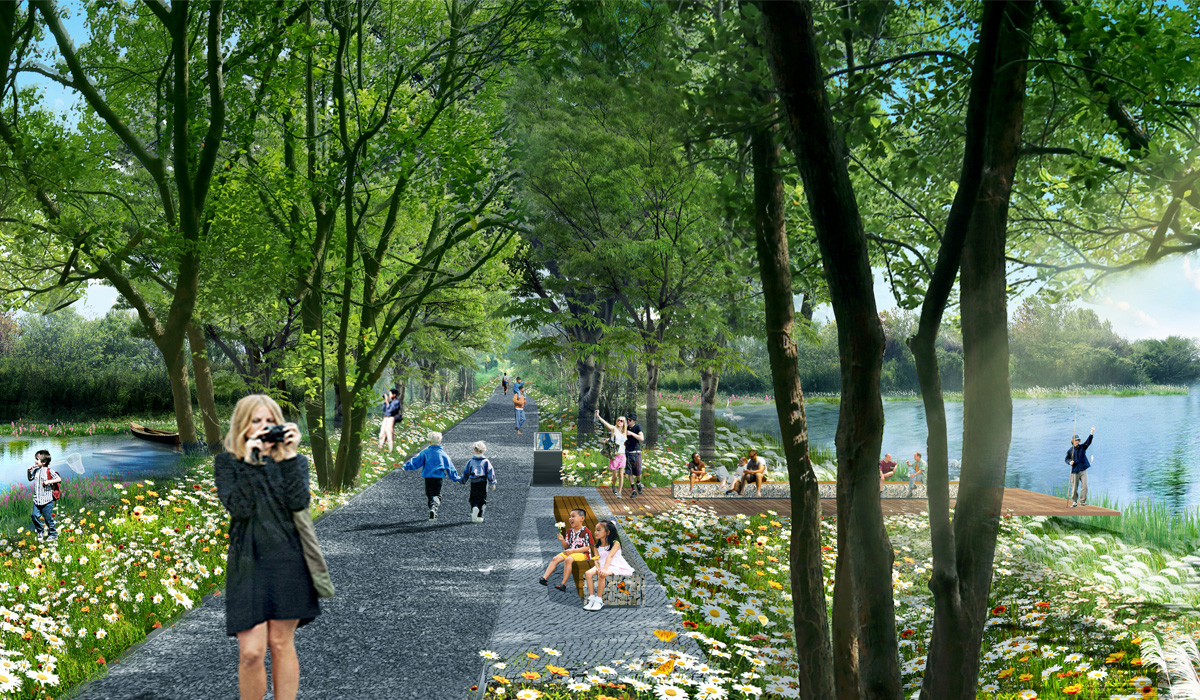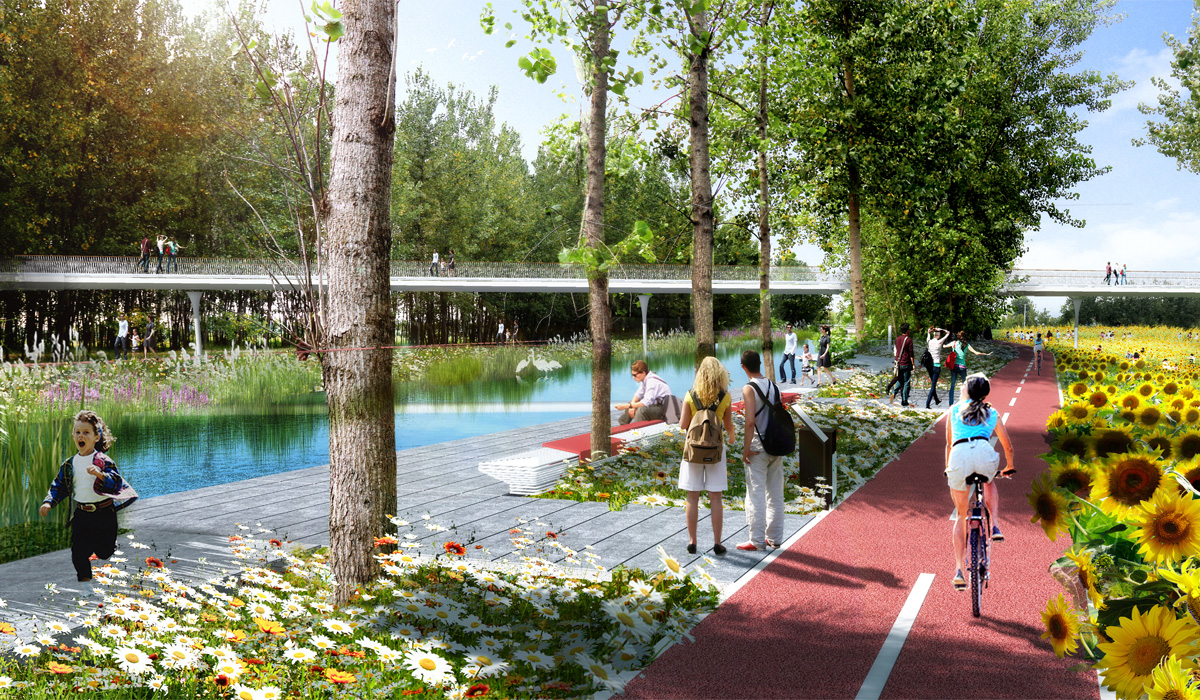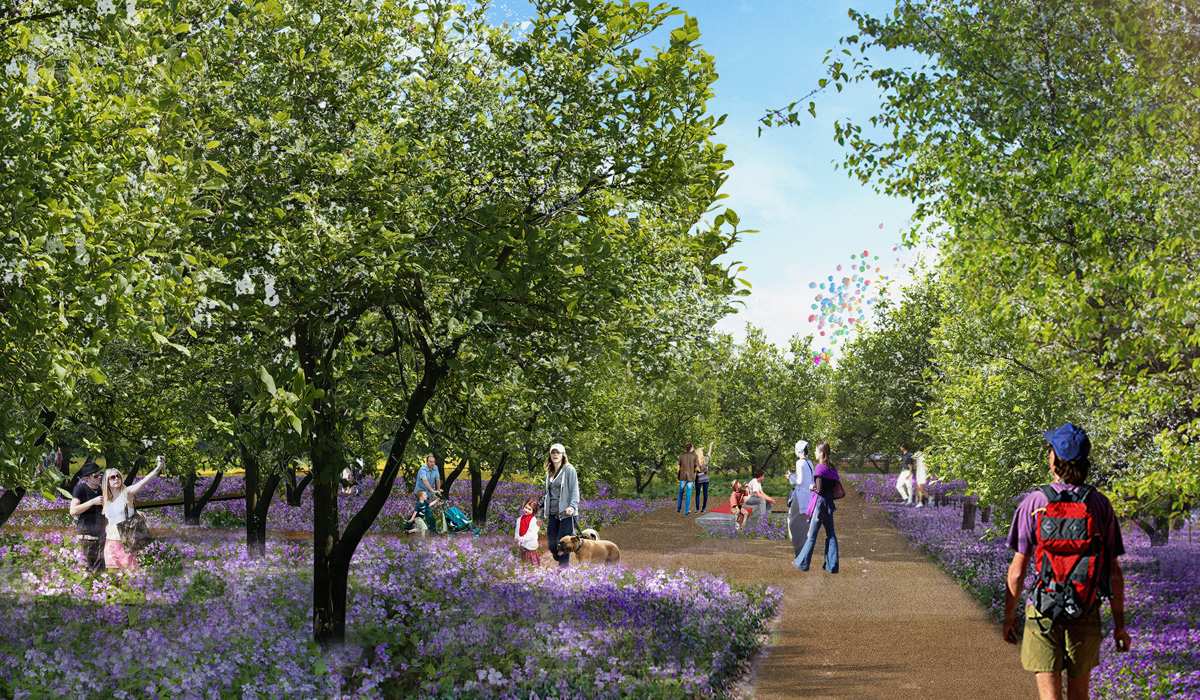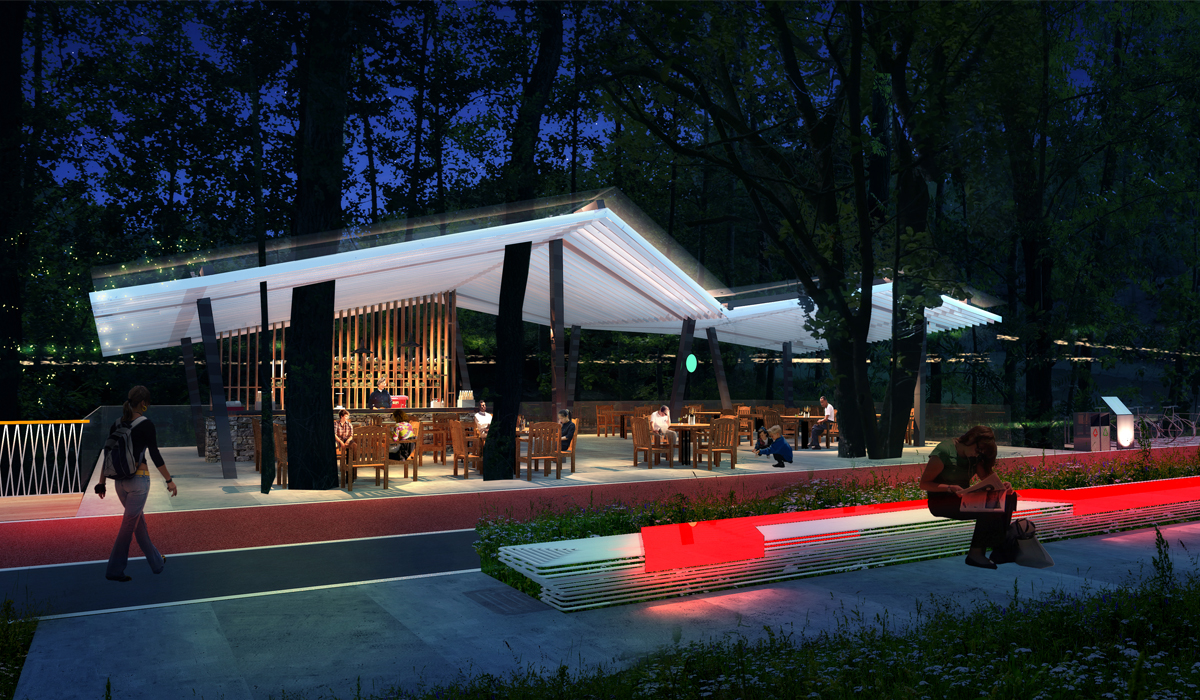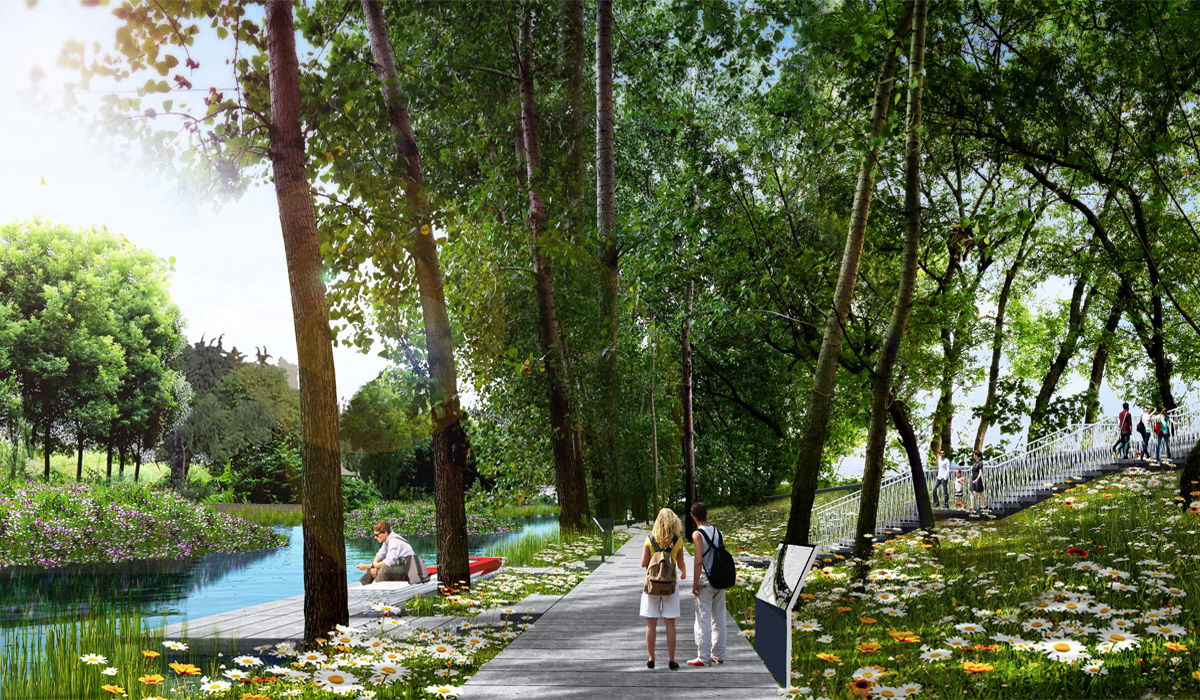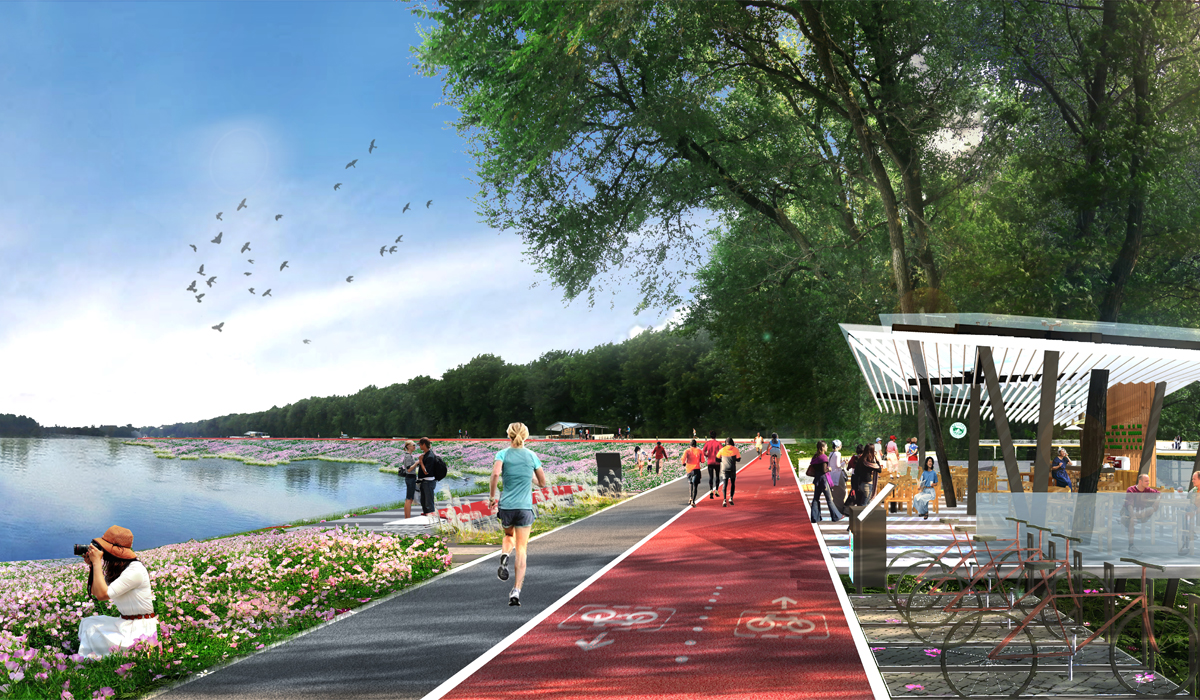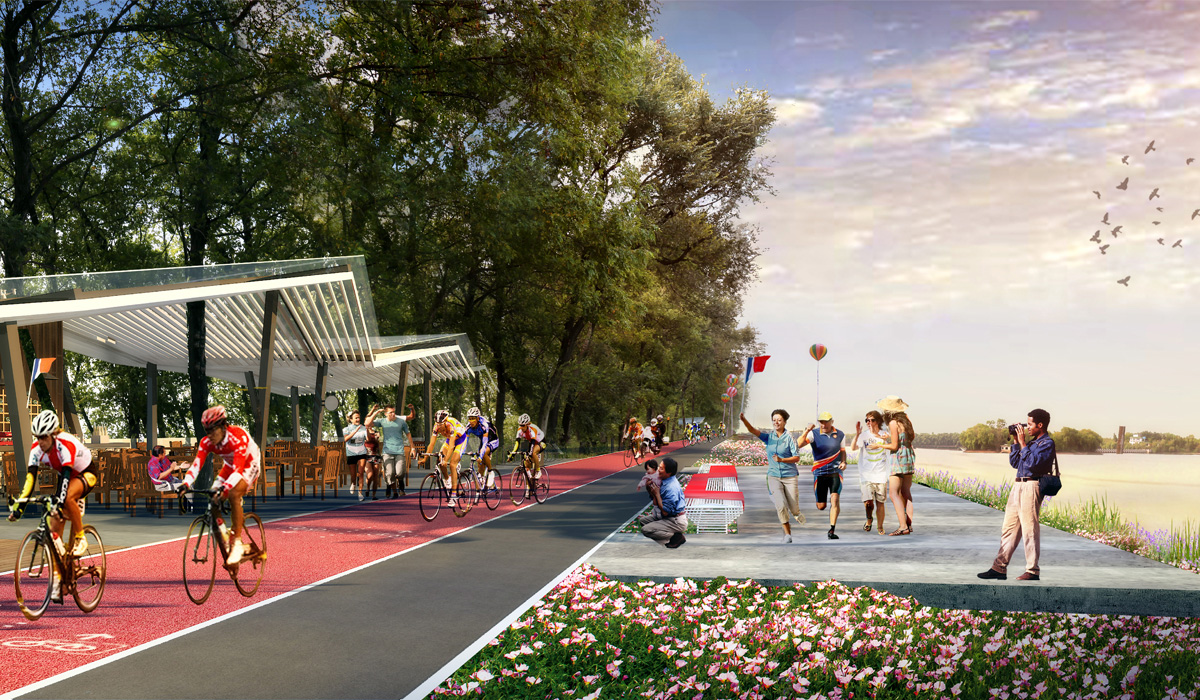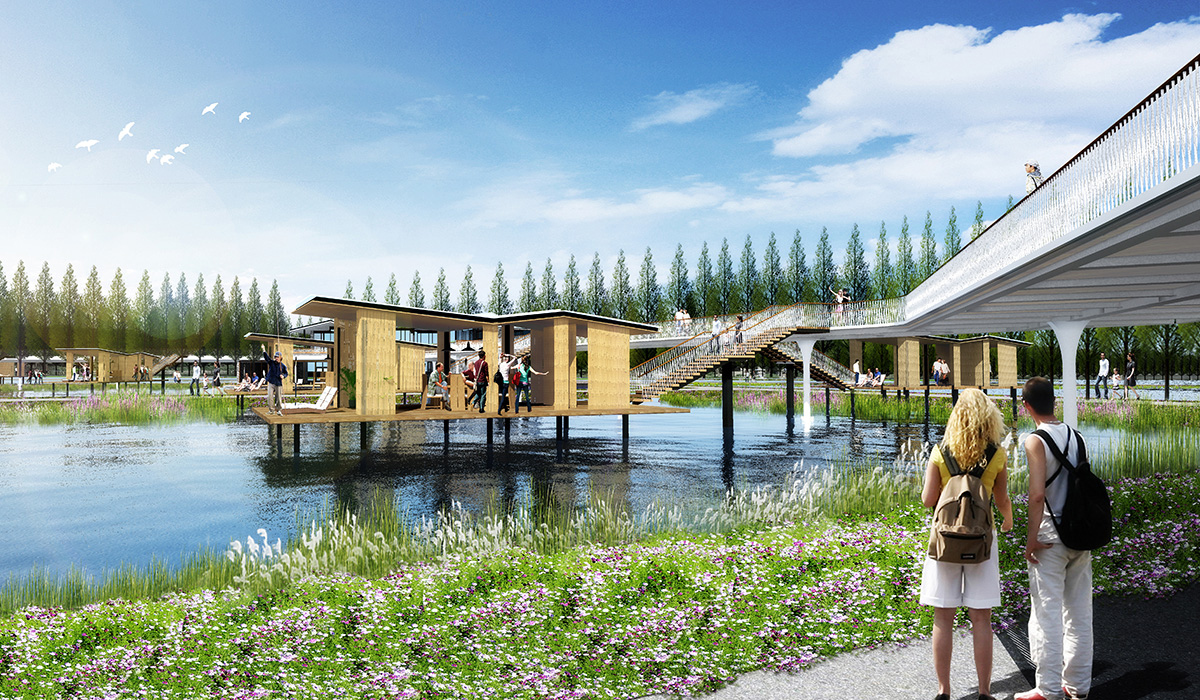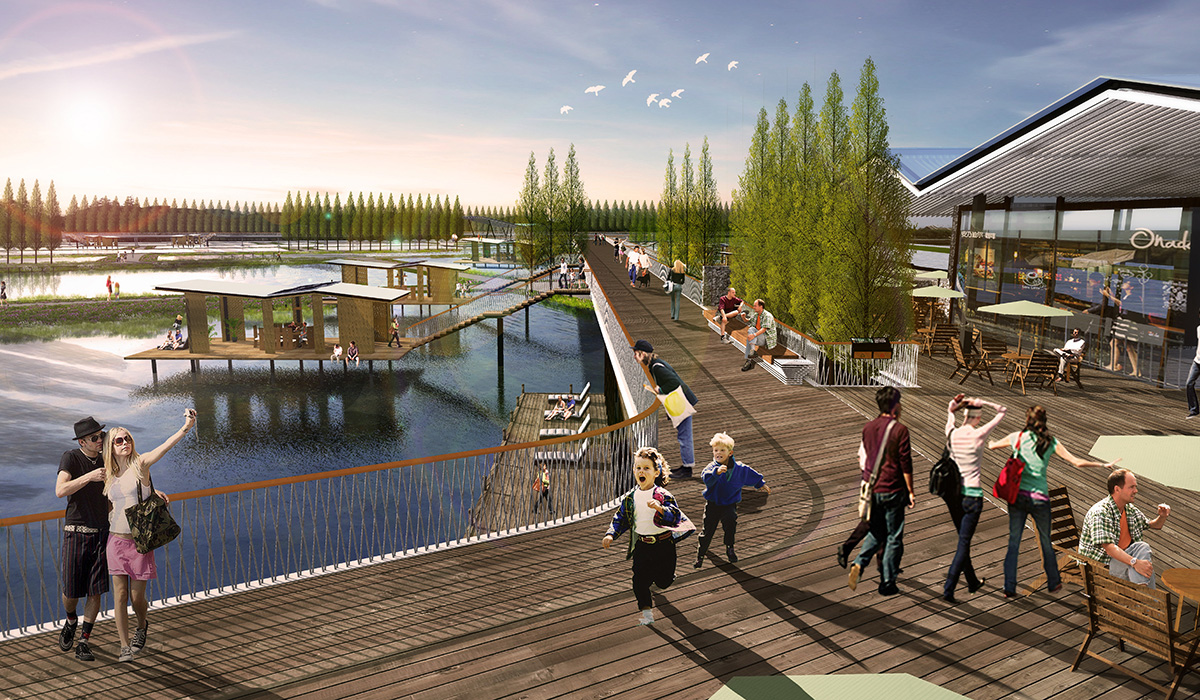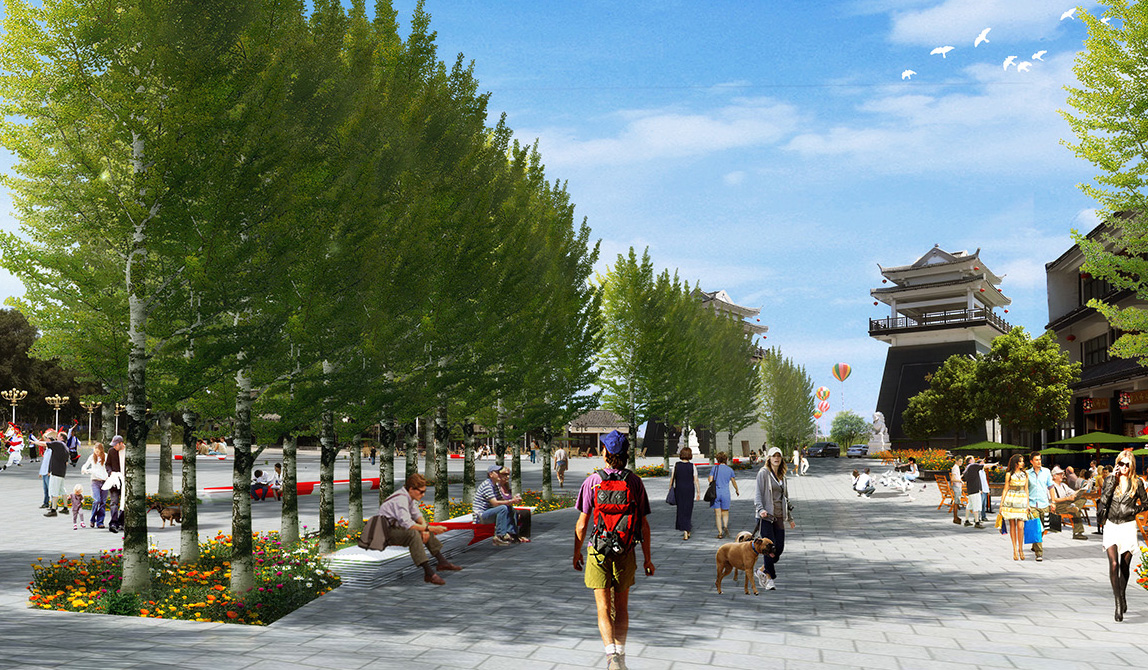Anhui Huoqiu Shuimentang Park
Project Information
- Project Location:
- China Huoqiu,Anhui
- Project Scale:
- 200 Hectares
- Design Time:
- October 2016
- Client:
- Hefei High-Tech Zone Huoqiu Modern Industrial Park Management Committee
Project Profile
1. Project Statement
Shuimentang has a history of over 2,600 years and is recognized as the first hydraulic project in the Huai River Basin, constructed under the supervision of Sun Shu'ao of the Chu State during the Spring and Autumn period. Known as the "First Ancient Pond in the World," the current design project focuses on the landscape engineering design for Shuimentang Park in Huoqiu County, covering an area of approximately 200 hectares.
The site is located in the northern part of the modern industrial park in Huoqiu County, Lu'an City, Anhui Province. It is bordered by Beihuan Road to the north, Park Road to the south, and planned roads to the east and west, with convenient transportation in the surrounding area. The project design includes the Shuimentang Wetland Park, dam renovation, and the design of a wave-proof island water park. The design aims to preserve the long-standing historical and cultural heritage and agricultural irrigation function of Shuimentang while addressing future urbanization needs to create an ecological city park that serves as a new regional landmark.
2. Objective and Challenge
The surrounding area of the reservoir primarily consists of farmland, fish ponds, and orchards, with a well-developed agricultural infrastructure, abundant water resources, and an efficient irrigation system. However, the project faces several key challenges:
1) Low-Lying Terrain:
The area outside Shuimentang is low-lying and prone to flooding. How can we mitigate flood risks?
2) Poor Water Quality:
The reservoir experiences significant water level fluctuations and lacks self-purification capabilities. How can we improve the water quality and purify the 40,000 cubic meters of wastewater entering from the treatment plant daily?
3) Cultural and Historical Representation:
How can we showcase local history and folklore?
4) Preserving Site Memory:
How can we maintain the area's historical and cultural memory, evoking a sense of nostalgia?
5) Rich Public Leisure Spaces:
How can we create diverse public leisure spaces that meet citizens' needs?
Addressing these challenges will result in an ecological, scenic, and sustainable resilient park.
3. Design Strategy
The design is based on the existing terrain and ecological texture, organizing the water systems within the boundary. This will expand certain water channels, connecting the water systems and purifying the water while meeting flood storage and irrigation needs. The existing roads will be reorganized to integrate with the external road network, simplifying internal traffic and offering varied pedestrian experiences. By layering slow-tour systems and service facilities on a foundation of green sponge bodies and ecological infrastructure, the park will cater to recreational needs.
Strategy 1: Establish a Green Sponge System Around the Lake
Construct a natural wetland purification system. Increase the water storage area while preserving the existing fish ponds, allowing for rainwater retention, absorption during the rainy season, and supply during the dry season to create a resilient landscape.
Strategy 2: Establish a Cultural Interpretation System Around the Lake
Utilize QR code systems to display Shuimentang’s hydraulic culture, local folklore, and fishing culture. Integrate local cultural elements into the design for greater regional character.
Strategy 3: Develop a Productive, Low-Maintenance Landscape
Preserve the existing agricultural layout and implement crop rotation with sunflowers, rapeseed, and wildflowers to create a productive and low-maintenance landscape with varying seasonal aesthetics.
Strategy 4: Establish Diverse Recreational Experiences Around the Lake
Implement various functional recreational systems around the lake: biking trails, walking paths, and facilities such as scenic lookouts and fishing areas. Introduce diverse commercial activities to boost local tourism.
4. Conclusion
These landscape design strategies have transformed the expansive farmlands, fish ponds, and historic reservoir into a city ecological park that preserves historical continuity and meets community needs. Utilizing existing site resources provides citizens with a park where they can learn about history, connect with nature, and engage with the land.
